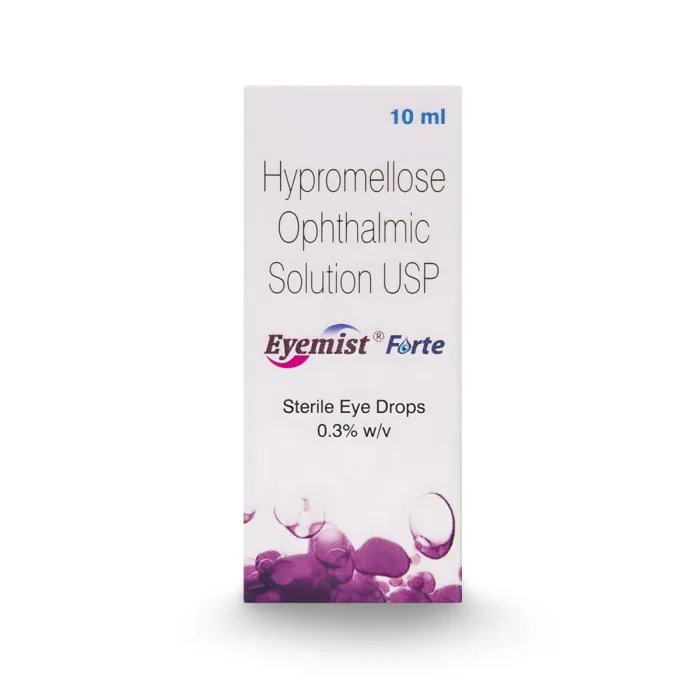Keratitis is characterized by inflammation of the cornea, which leads to foreign body sensation and eye pain.
Filamentary Keratitis is a noninfectious type of Keratitis that occurs due to an injury, a foreign object in the eye, or wearing contact lenses for too long.
It is a painful condition that can hamper your ability to function normally in day-to-day life. If left untreated, it poses a high risk of permanent vision changes.
Early diagnosis and treatment can help prevent these complications.
This article will discuss all about Filamentary Keratitis, including its symptoms, causes, and treatments.
Filamentary Keratitis Explained
Filamentary Keratitis, a noninfectious type of Keratitis, is characterized by the presence of filaments on the corneal surface. The cornea is the transparent top layer of the eye.
These filaments are made up of abnormal mucous and dead cells that can lead to symptoms like foreign body sensation, irritation, and eye pain.
Filamentary Keratitis is a relatively uncommon condition with a potential risk of sight-threatening complications.
Prompt medical treatment can help prevent vision loss due to Filamentary Keratitis.
Save up to 90% on your medicine bills

Eyemist Forte 10 ml

Milflox 0.5% 5 ml

Restasis 0.05% Ophthalmic Emulsion

Pred Forte 10 ml
Symptoms of Filamentary Keratitis
 Source: thekopmylife
Source: thekopmylifeSymptoms of Filamentary Keratitis can vary from person to person. Recognizing the symptoms is essential for early diagnosis and treatment of the condition.
- Eye Discomfort: Patients often report feeling like something is in their eye, leading to irritation and discomfort
- Blurry Vision: Filaments can obstruct vision, causing blurred or hazy sight
- Redness and Swelling: The eye may appear red and swollen due to the irritation caused by the filaments
- Increased Tear Production: Paradoxically, excessive tearing may occur as the eye tries to relieve the irritation
- Sensitivity to Light: Patients may become more sensitive to light, leading to a condition known as photophobia
Filamentary Keratitis Causes
Filamentary Keratitis can result from an injury, wearing contact lenses for too long, or an underlying eye condition.
Let us discuss the causes of Filamentary Keratitis in detail.
- Dry Eye Syndrome: One of the notable causes of Filamentary Keratitis is Dry Eye Syndrome When your eyes do not produce enough tears, or the tears evaporate too quickly, it can lead to corneal damage and filament formation
- Corneal Injuries: Trauma or injury to the cornea, such as scratches or burns, can also trigger Filamentary Keratitis
- Contact Lenses: Improper use or extended wear of contact lenses may lead to the development of this condition
- Underlying Health Conditions: Conditions like Sjögren’s Syndrome, ocular rosacea, and virus like herpes simplex can increase the risk of Filamentary Keratitis
Filamentary Keratitis Treatment
 Source: tirc83_from_Getty_Images
Source: tirc83_from_Getty_ImagesTreatment for Filamentary Keratitis aims to relieve symptoms and address the underlying causes:
- Artificial Tears: Lubricating eye drops can help alleviate dryness and irritation
- Medications: Your doctor may prescribe anti-inflammatory or antibiotic eye drops to reduce inflammation and manage any infection
- Eyelid Hygiene: Good eyelid hygiene can help manage underlying conditions contributing to Filamentary Keratitis
- Contact Lens Care: If prolonged use of contact lenses is a contributing factor, follow proper care and hygiene guidelines
- Bandage Contact Lenses: In severe cases, your eye doctor may recommend bandage contact lenses when the filaments break off, leaving epithelial defects behind
Bandage contact lenses should not be left in place for more than a month
Final Outlook
Filamentary Keratitis is a noninfectious type of Keratitis that is characterized by the formation of filaments on the corneal surface.
It is a painful and distressing eye condition that can have complications like vision changes if left untreated.
Identifying common symptoms like eye pain, photophobia, and blurry vision can help diagnose and treat the condition early.
Treating the underlying causes, such as Dry Eye Syndrome or corneal injuries, is a crucial step in treating Filamentary Keratitis.
Proper eye hygiene and using artificial tear drops can relieve symptoms like dry eye, eye pain, and irritation.
Antibiotic eyedrops may also help reduce inflammation and manage an infection.
An eye care specialist may also recommend bandage contact lenses if the symptoms do not respond to artificial tears and other medications.

Frequently Asked Questions
Can Filamentary Keratitis be prevented?
No, it is not always possible to prevent Filamentary Keratitis. However, you can reduce the risk by practicing good eye hygiene, and managing underlying health conditions.
Are there home remedies for Filamentary Keratitis?
Yes, home remedies can help manage symptoms, such as warm compresses and artificial tears.
However, consulting a healthcare professional for a proper diagnosis and treatment plan is essential.
Can Filamentary Keratitis lead to vision loss?
Yes, but in most cases, Filamentary Keratitis can be managed with appropriate treatment, and vision loss is rare. However, untreated or severe cases may have long-term effects on vision.
How is Filamentary Keratitis diagnosed?
Your eye doctor can diagnose Filamentary Keratitis through a comprehensive eye examination. They may also conduct a thorough assessment of your symptoms and a detailed look at your cornea.
Can contact lens wearers with Filamentary Keratitis still use contact lenses?
Yes, in some cases, contact lenses may still be an option. However your eye care professional will guide you on proper usage and care to minimize the risk of worsening the condition.
Cheap Medicine Shop only refers to credible, authoritative sources for our content. If you’re curious about how we ensure the integrity of our content, we encourage you to read our Content Information Policy.














